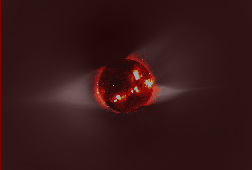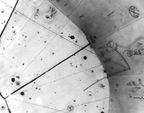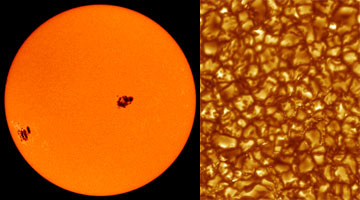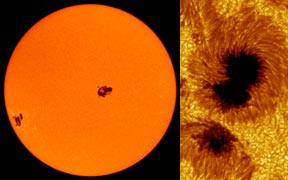Space Weather Glossary
Scientists use a lot of strange terms when they talk about space weather. Here are some space weather words and terms you may not know. Click on a term to learn more about it:
 Space Weather
Space Weather
You might also be interested in:

Rising above the Sun's chromosphere , the temperature jumps sharply from a few tens of thousands of kelvins to as much as a few million kelvins in the Sun's outer atmosphere, the solar corona. Understanding
...more
A magnetosphere has many parts, such as the bow shock, magnetosheath, magnetotail, plasmasheet, lobes, plasmasphere, radiation belts and many electric currents. It is composed of charged particles and
...more
The neutrino is an extremely light particle. It has no electric charge. The neutrino interacts through the weak force. For this reason and because it is electrically neutral, neutrino interactions with
...more
Most of the energy we receive from the Sun is the visible (white) light emitted from the photosphere. The photosphere is one of the coolest regions of the Sun (6000 K), so only a small fraction (0.1%)
...more
Plasma is known as the fourth state of matter. The other three states are solid, liquid and gas.In most cases, matter on Earth has electrons that orbit around the atom's nucleus. The negatively charged
...more
The plasmasphere is a donut-shaped region inside the Earth's magnetosphere. It is basically an extension of the ionosphere, or the topmost part of the Earth's atmosphere. The magnetic field lines of the
...more
Sunspots are dark, planet-sized regions that appear on the "surface" of the Sun. Sunspots are "dark" because they are colder than the areas around them. A large sunspot might have a temperature of about
...more














